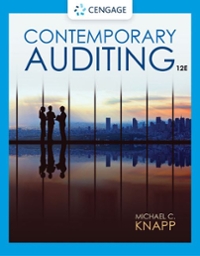Jack Nicklaus began playing golf as a young boy and had mastered the game by his mid-teens.
Question:
Jack Nicklaus began playing golf as a young boy and had mastered the game by his mid-teens. After graduating from high school, the golf prodigy accepted a scholarship to play collegiately for Ohio State University in his hometown of Columbus.
At the age of 21, Nicklaus joined the professional golf tour and was an instant success, racking up more than one dozen victories within a few years.
Shortly after joining the professional golf tour, the business-minded Nicklaus realized that winning golf tournaments was not the most lucrative way to profit from his enormous skills. At the time, the undisputed "king" of golf was Arnold Palmer, who endeared himself to the golfing public with his easy smile and affable manner on the golf course. Adoring legions of fans known as "Arnie's Army" tracked Palmer's every move during a tournament. Palmer's popularity with the public translated into a series of high-profile and profitable endorsement deals. On the other hand, golf fans generally resented Nicklaus's no-nonsense approach on the golf course. Those same fans resented Nicklaus, even more, when it became evident that the burly Ohioan with the trademark crew cut would likely replace Palmer as the world's best golfer, which he did. Nicklaus would ultimately win a record 18 major golf championships and edge out Palmer for the "Player of the Century" award in the golfing world.
With the help of a professional sports agent, Nicklaus worked hard to develop a softer, more appealing public image. By the mid-1970s, Nicklaus's makeover was complete, and his popularity rivaled that of Palmer. As his popularity with the public grew, Nicklaus was able to cash in on endorsement deals and other business opportunities. Eventually, Nicklaus founded GBI to serve as the corporate umbrella for his business interests.
In 1996, Nicklaus decided to expand his business operations by spinning off a subsidiary from GBI via an initial public offering (IPO). Nicklaus named the new public company Golden Bear Golf, Inc. (Golden Bear). One of Golden Bear's principal lines of business would be the construction of golf courses. GBI would remain a privately owned company that would continue to manage Nicklaus's other business ventures. Because Nicklaus planned to retain more than 50 percent of Golden Bear's common stock, he and his subordinates would be able to completely control the new company's operations.
Nicklaus chose his trusted associate Richard Bellinger to serve as Golden Bear's CEO.
Bellinger then appointed John Boyd and Christopher Curbello as the two top executives of Paragon International, Golden Bear's wholly-owned subsidiary that would be responsible for the company's golf course construction business. Boyd became Paragon's president and principal operating officer, while Curbello assumed the title of Paragon's vice president of operations. On August 1, 1996, Golden Bear went public.
The company's stock traded on the NASDAQ exchange under the ticker symbol JACK.
Questions
1. Professional auditing standards identify the "management assertions" that commonly underlie a set of financial statements. Which of these assertions were relevant to Paragon's construction projects? For each of the assertions that you listed, describe an audit procedure that Arthur Andersen could have employed to corroborate that assertion.
2. The SEC referred to several "audit failures" that were allegedly the responsibility of Michael Sullivan. Define what you believe the SEC meant by the phrase "audit failure." Do you believe that Sullivan, alone, was responsible for the deficiencies that the SEC noted in Andersen's 1997 audit of Golden Bear? Defend your answer.
3. Sullivan identified the 1997 Golden Bear audit as a "high-risk" engagement. How do an audit engagement team's responsibilities differ, if at all, on a high-risk engagement compared with a "normal" engagement? Explain.
4. The AICPA has issued several Audit and Accounting Guides for specialized industries. Do auditors have a responsibility to refer to these guides when auditing clients in those industries? Do these guides override or replace the authoritative guidance included in the professional auditing standards?
5. Was the change that Paragon made in applying the percentage-of-completion accounting method a "change in accounting principle" or a "change in accounting estimate"? Briefly describe the accounting and financial reporting treatment that must be applied to each type of change.
Step by Step Answer:






